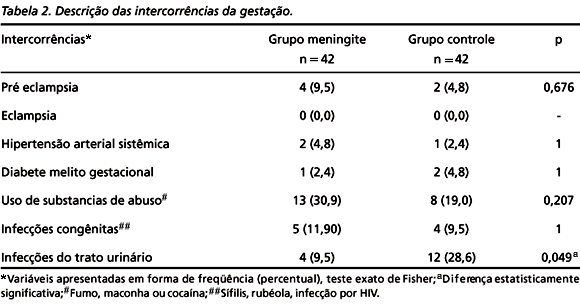OBJECTIVE: The goal of this study was to identify and to analyze the features related to the occurrence of neonatal meningitis. METHOD: In a case-control study we examined all newborns presenting meningitis between August/2002 and December/2003 in the neonatal Intensive Care Unit. Healthy newborns were enrolled as a Control Group (CG). Data related to pregnancy, labor and the neonate itself were collected. The results with p<0,05 were considered significant. RESULTS: 42 newborns with meningitis were compared to 42 controls. The meningitis group (MG) presented a lower number of medical visits during the prenatal care. The most common abnormalities detected in both groups were: drug addiction, congenital infections, preeclampsia, eclampsia, gestational diabetes mellitus and urinary tract infections. Fetal respiratory distress and the use of respiratory support were related to the occurrence of meningitis. The average weight and the APGAR scores were lower in the MG. The prevalence of premature and small for the gestational age infants was significantly higher in the MG. The neurological examination detected abnormalities in 35.7% of the meningitis cases. CONCLUSION: The association of risk factors related to pregnancy, labor and the newborn itself to the neonatal meningitis outcome in our setting is similar to the described in the literature.
neonatal meningitis; risk factors





